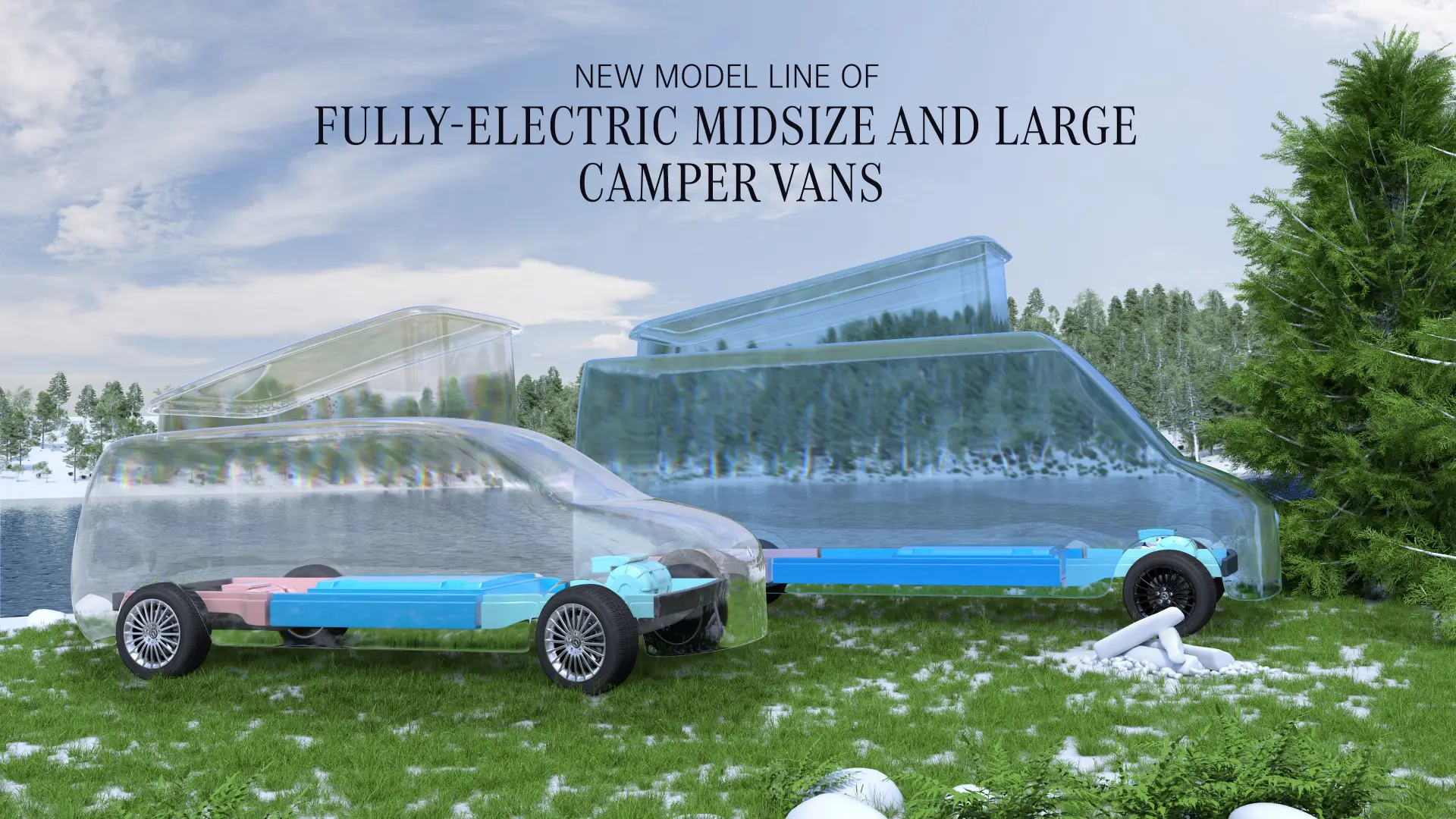Mercedes Shared Its Electrification Road Map
Mercedes continues with its electric strategy that also applies to the family of industrial vehicles, based on a new platform that has just been presented. It is nothing new when we say that Mercedes has ambitious plans for the total electrification of its fleet. And when we refer to its fleet, we mean all of it, cars and vans. Although the strategy is going slower than expected, a few days ago the CEO announced the one-year delay and the strategy is moving forward. The industrial section will follow the same steps, although due to its special characteristics, it must offer a personalized structure. Mercedes has just presented the VAN.EA platform, a versatile and modular base on which all of the company’s industrial models will revolve from 2026.
It is already a year since the Germans took a significant step forward in their goal of electrification. The Mercedes E-Class will be the last passenger car to be designed in the old-fashioned way, that is, with a platform for thermal vehicles. From now on, each new launch of the star’s brand will be based on an electric platform. It will be the combustion cars that have to adapt to the structure of the electric ones and not the other way around, as has been the case for years. This will allow Mercedes to offer better electrification qualities in all its models.
We had already heard about the VAN.EA platform, but no specific details about it had been released until now. It will be one of the four electric platforms that will support the Mercedes range and it will be the last to arrive. The Germans have just revealed new details about it and, incidentally, have provided specific dates for its entry into service. Any new model that is launched after 2026 will be based on this versatile structure that will be able to adapt to different battles, weights, and models. From the V-Class to the largest version of the Mercedes Sprinter.
As reported by Mercedes, the VAN.EA architecture will allow them to explore new limits of range in their industrial models, although for this they will significantly reduce the mechanical portfolio concerning current ICE models. One of the essential requirements is that this new structure will have to withstand very demanding conditions. The weight of the battery will be added to the great load capacities of the industrialists of the house. Up to 3,500 kg of maximum authorized mass for the smallest models and up to 6,000 kg for the largest units.
Mechanical options will be paired with a wide variety of batteries. Mercedes will offer a wide range of range so that each client can bet on the format that best suits them based on their performance. The Germans have already announced that the private versions, passenger cars derived from industrial ones, will use the VAN.EA-P version that will offer electric ranges of up to 500 kilometers. They will also offer superior technology with the latest Mercedes operating system and up-to-grade 2 autonomous driving.

The range also includes the launch of 100% electric computerized units beyond the current EQV Marco Polo. The format will grow, being able to show camper units of the future Mercedes Sprinter. Mercedes’ objective, which we will see if it is met or not, is to reach a 50% market share of electric units by the end of the decade. The production of vehicles is based on the VAN.EA platform will have a global reach. Units will be built in the United States, China, and in different locations in Europe, including the Vitoria plant, which has already received the order to manufacture a new electric van.
The post Mercedes Shared Its Electrification Road Map appeared first on Latest Car News.
Latest Car News
Comments
Post a Comment